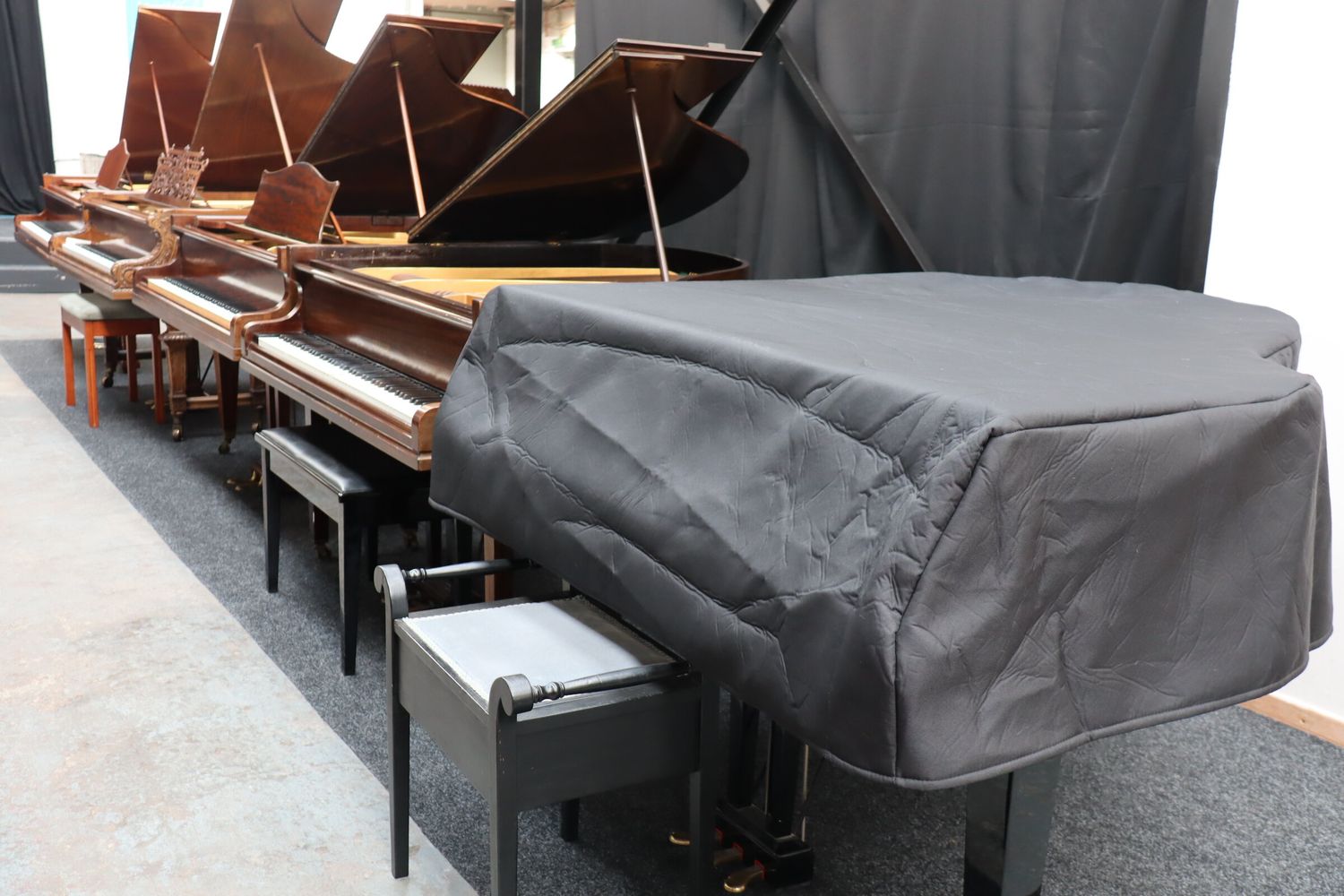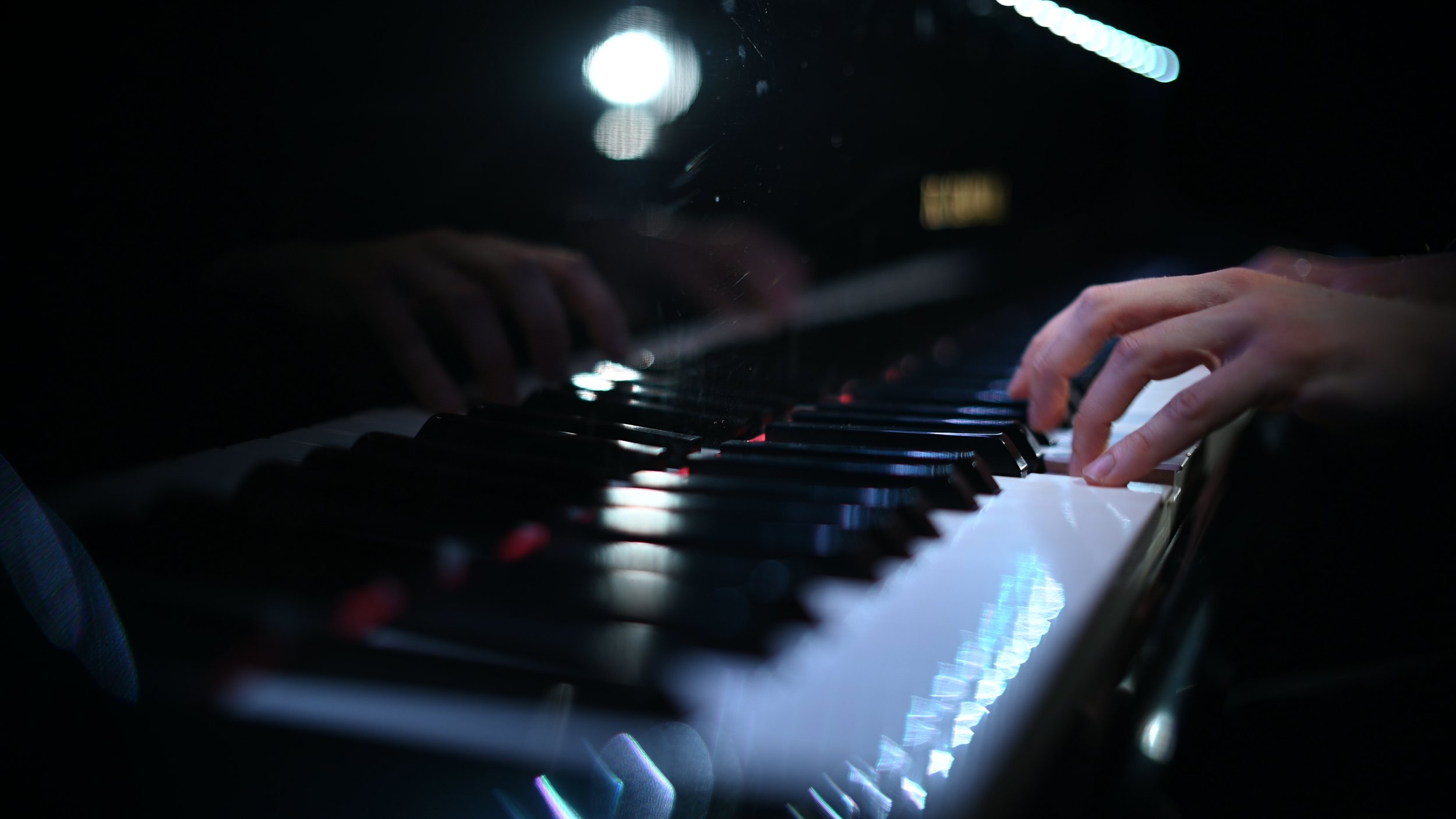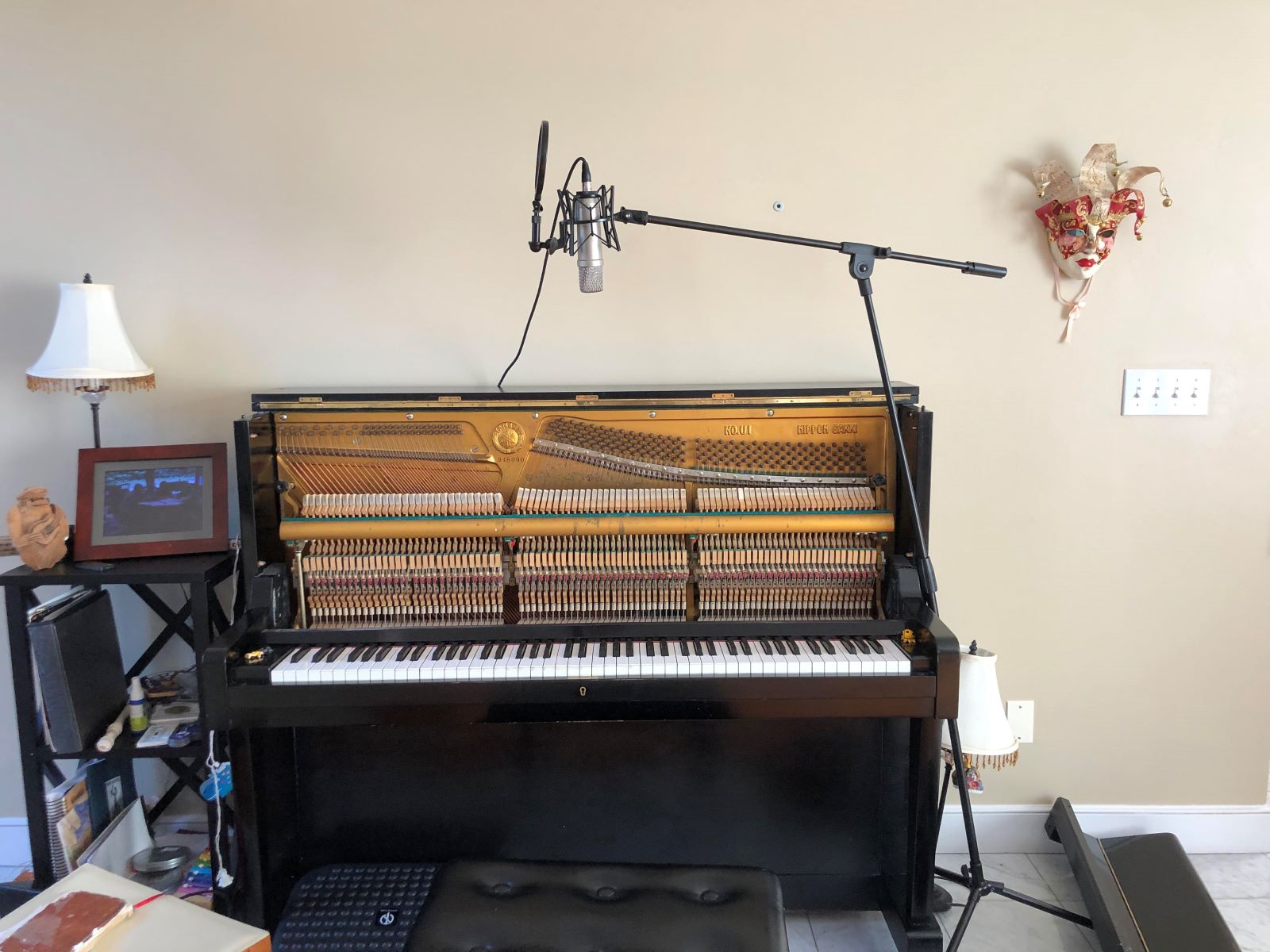Home>Instruments>Piano>How To EQ A Piano


Piano
How To EQ A Piano
Modified: February 11, 2024
Learn how to EQ a piano and achieve the perfect sound with our expert tips and techniques. Enhance the tones of your piano with our comprehensive EQ guide.
(Many of the links in this article redirect to a specific reviewed product. Your purchase of these products through affiliate links helps to generate commission for AudioLover.com, at no extra cost. Learn more)
Table of Contents
Introduction
Introduction
When it comes to producing a captivating and professional piano sound, equalization (EQ) plays a crucial role. Whether you're recording a grand piano in a concert hall or using a digital keyboard in a home studio, understanding how to EQ a piano can significantly enhance its presence and impact within a mix. EQ allows you to sculpt the tonal characteristics of the piano, ensuring that it sits perfectly in the sonic landscape of a song or composition.
EQing a piano involves manipulating its frequency response to bring out its natural warmth, clarity, and resonance while addressing any potential sonic issues that may arise during recording or mixing. This process requires a delicate balance between enhancing the piano's unique timbre and ensuring that it complements other instruments and vocals within the musical arrangement.
In this article, we will explore the art of EQing a piano, covering basic and advanced techniques to help you achieve a polished and professional piano sound. Whether you're a recording engineer, a music producer, or a pianist looking to optimize your instrument's sonic potential, mastering the art of piano EQ can elevate the overall quality of your musical productions. Let's dive into the fascinating world of sculpting the perfect piano sound through the art of equalization.
Understanding the Frequency Range of a Piano
Understanding the Frequency Range of a Piano
Before delving into the intricacies of EQing a piano, it’s essential to comprehend the instrument’s frequency range and sonic characteristics. A standard acoustic piano encompasses a wide spectrum of frequencies, spanning from the deep, resonant lows of around 27.5 Hz (A0) to the shimmering highs reaching approximately 4186 Hz (C8). This expansive range allows the piano to project rich harmonics and overtones, contributing to its distinctive and versatile sound.
Each section of the piano—bass, tenor, and treble—encompasses unique frequency components. The bass section, including the lower octaves, produces fundamental frequencies that lay the foundation for the instrument’s overall resonance. Moving up the keyboard, the tenor and treble regions introduce progressively higher frequencies, adding brightness and clarity to the piano’s timbre.
Understanding the frequency distribution of a piano is vital for effective EQing. By identifying the dominant frequencies and tonal characteristics across the instrument’s range, you can tailor the EQ adjustments to accentuate its inherent qualities while addressing any tonal imbalances or inconsistencies that may arise during recording or mixing.
When EQing a piano, it’s crucial to consider not only the instrument’s fundamental frequencies but also its harmonic content. The piano’s harmonics contribute to its richness and complexity, and by understanding how to manipulate these harmonics through EQ, you can enhance the instrument’s overall presence and impact within a mix.
Now that we’ve gained insight into the piano’s frequency range and sonic intricacies, let’s explore the fundamental EQ techniques for sculpting its sound to perfection.
Basic EQ Techniques for Piano
Basic EQ Techniques for Piano
When applying basic EQ techniques to a piano, the primary goal is to emphasize its natural tonal qualities while addressing any sonic issues that may arise during recording or mixing. Here are some fundamental EQ techniques to enhance the sound of a piano:
- Low-End Management: The lower register of the piano, particularly the bass frequencies, can sometimes become boomy or muddy. To address this, consider using a high-pass filter to attenuate frequencies below the piano’s fundamental range, typically around 80-120 Hz. This helps clean up the low end and prevents it from clashing with the bass frequencies of other instruments in the mix.
- Presence Boost: To bring out the piano’s clarity and articulation, a gentle boost in the upper midrange frequencies (around 2-5 kHz) can add presence and definition to the instrument’s sound. This can help the piano cut through the mix without sounding harsh or piercing.
- Controlling Harshness: If the piano exhibits harsh or strident tones in the higher frequencies, a slight reduction in the 2-4 kHz range can help mitigate any piercing qualities while retaining the instrument’s brightness.
- Dynamic EQ for Resonance: Dynamic EQ can be employed to tame resonant frequencies that may intermittently peak during aggressive playing or sustain pedal usage. By dynamically attenuating these resonant peaks, you can ensure a more consistent and controlled piano sound without sacrificing its natural dynamics.
When implementing these basic EQ techniques, it’s essential to exercise restraint and subtlety, as excessive processing can lead to an unnatural or over-processed sound. By judiciously applying EQ adjustments, you can preserve the piano’s organic character while addressing specific tonal aspects that require refinement.
As we’ve explored the foundational EQ techniques for shaping the piano’s sonic profile, let’s delve into advanced EQ strategies to further refine and optimize its sound within a mix.
Advanced EQ Techniques for Piano
Advanced EQ Techniques for Piano
Advanced EQ techniques offer a nuanced approach to sculpting the piano’s sonic characteristics, allowing for precise tonal shaping and enhancement. These techniques enable you to address specific frequency nuances and elevate the piano’s presence within a mix. Here are some advanced EQ strategies tailored for optimizing the piano’s sound:
- Mid/Side Processing: Implementing mid/side EQ processing provides the flexibility to separately treat the mono (center) and stereo (sides) components of the piano’s sound. This allows for targeted adjustments, such as enhancing the midrange warmth and clarity while widening the stereo image for the ambient reverberations and spatial depth.
- Dynamic EQ for Expressive Playing: Dynamic EQ can be utilized to dynamically control the instrument’s tonal balance in response to varying playing dynamics. By applying dynamic EQ to specific frequency bands, you can ensure that the piano’s tonal character remains consistent and balanced, regardless of the intensity of the performance.
- Harmonic Excitation: Employing harmonic excitation techniques can enrich the piano’s timbre by subtly emphasizing and enhancing its harmonic content. This can impart a sense of richness and depth to the instrument’s sound, elevating its overall presence and tonal complexity within the mix.
- Frequency-Specific Compression: Utilizing multiband compression or dynamic EQ to target specific frequency ranges allows for precise control over the piano’s dynamics and tonal balance. This approach enables you to address transient spikes or resonant frequencies without affecting the overall sonic integrity of the instrument.
By integrating these advanced EQ techniques into your piano processing workflow, you can refine the instrument’s sonic nuances with surgical precision, elevating its impact and expressiveness within a musical arrangement.
As we’ve explored advanced EQ strategies for optimizing the piano’s sonic potential, let’s shift our focus to essential tips for effectively integrating EQ within a piano mix.
Tips for EQing a Piano in a Mix
Tips for EQing a Piano in a Mix
When integrating a piano into a mix, strategic EQ techniques can enhance its clarity, presence, and coherence within the overall sonic landscape. Here are some valuable tips for effectively EQing a piano within a mix:
- Contextual EQing: Consider the role of the piano within the mix and adjust the EQ settings accordingly. For instance, in a dense arrangement, subtle cuts in non-essential frequency ranges can create sonic space for other instruments, while in a sparse arrangement, a more open and resonant piano sound may be suitable.
- Collaborative EQing: Collaborate with the other instrumental and vocal elements in the mix by carving out frequency niches to avoid masking and conflicting tonalities. This collaborative approach ensures that each element retains its distinct sonic presence without clashing with the piano.
- Revisiting EQ Decisions: Periodically reassess the piano’s EQ settings in the context of the evolving mix. As additional elements are introduced or modified, re-evaluate the piano’s EQ to maintain its optimal integration within the changing sonic landscape.
- Automation for Dynamic EQ: Utilize automation to dynamically adjust the piano’s EQ settings in response to varying sections of the composition. This allows for tailored EQ modifications to accommodate the instrument’s changing role and prominence throughout the song.
- Room for Resonance: Preserve the natural resonance and ambience of the piano by exercising restraint in excessive EQ cuts. Embracing the instrument’s inherent resonant frequencies contributes to its organic and expressive character within the mix.
By implementing these tips, you can refine the piano’s sonic integration within a mix, ensuring that it maintains its musical impact and clarity while harmoniously coexisting with other elements.
With these valuable insights into optimizing the piano’s sonic presence through EQ, let’s summarize the key takeaways in the concluding section.
Conclusion
Conclusion
Mastering the art of EQing a piano is a transformative journey that empowers musicians, producers, and audio engineers to unlock the instrument’s full sonic potential. By understanding the frequency range and sonic intricacies of the piano, we gain the foundation to apply both basic and advanced EQ techniques with precision and artistry.
Through basic EQ adjustments such as low-end management, presence boosting, and dynamic control, we can sculpt the piano’s sound to achieve clarity, warmth, and balance. Advancing to more nuanced strategies, including mid/side processing, dynamic EQ for expressive playing, harmonic excitation, and frequency-specific compression, allows for meticulous tonal shaping and enhancement.
When integrating the piano into a mix, the collaborative and contextual application of EQ ensures that it maintains its distinct sonic presence while harmonizing with other musical elements. By embracing the instrument’s natural resonance and leveraging dynamic EQ automation, we can preserve its expressive character and adapt its sonic profile to the evolving dynamics of a composition.
Ultimately, the art of EQing a piano transcends technical manipulation; it embodies a creative endeavor to elevate the instrument’s emotive power and musical impact. As we navigate the sonic intricacies of the piano through the lens of EQ, we embark on a transformative process that enriches the sonic tapestry of our musical creations.
With a blend of technical finesse and artistic intuition, EQing a piano becomes a harmonious dialogue between the instrument’s inherent beauty and the creative vision of the music maker. As we continue to refine our understanding and application of EQ techniques, the piano emerges as a vibrant and resonant force, captivating listeners with its timeless allure and expressive depth.











